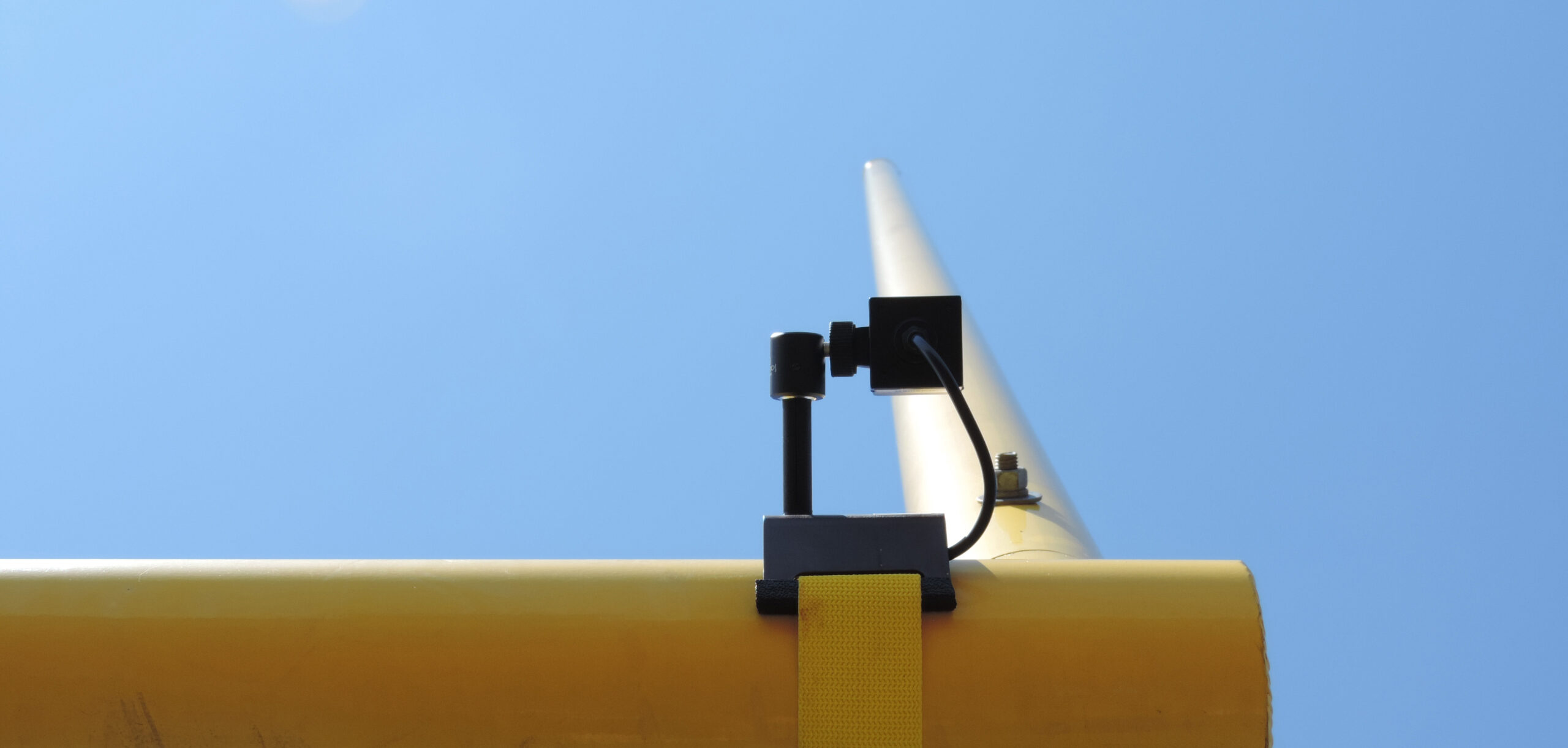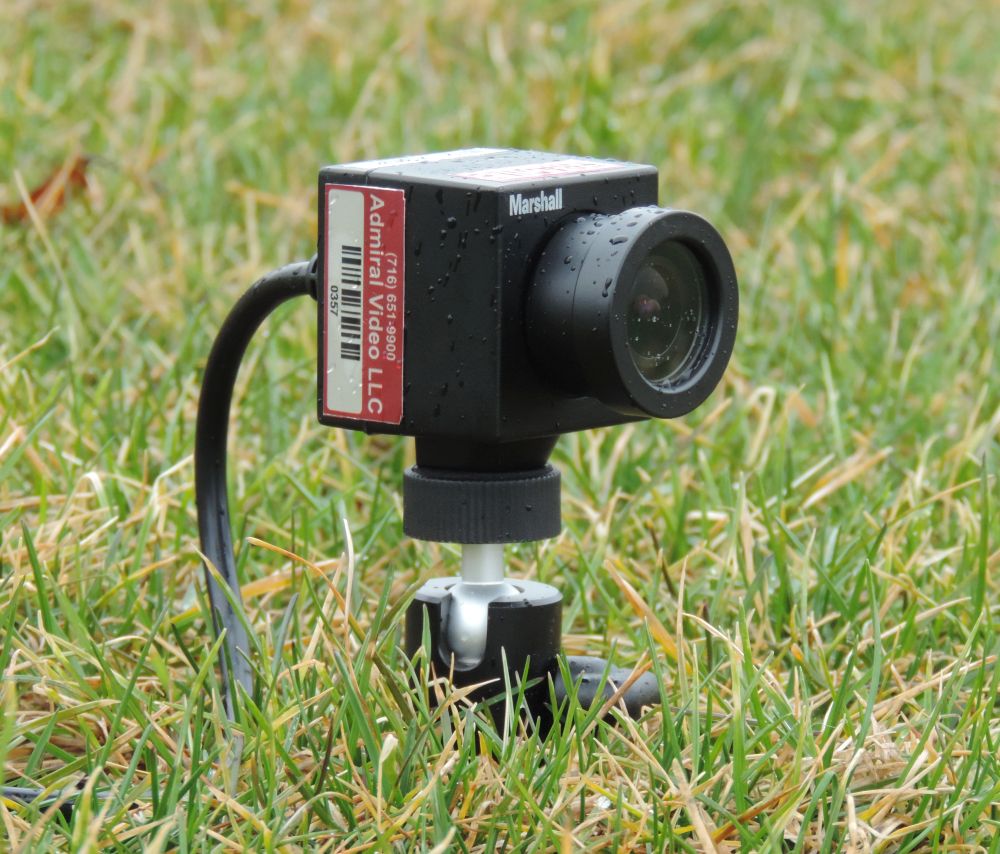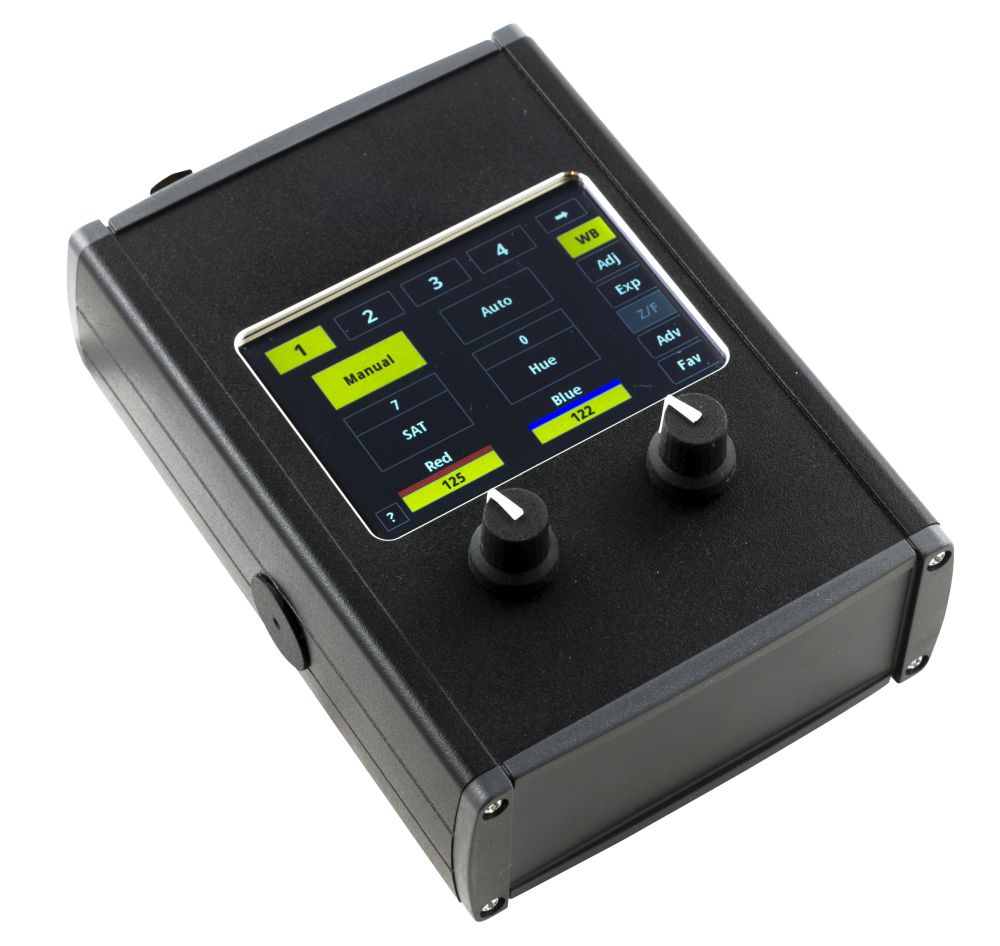
Admiral Video Scores a Touchdown with Marshall POV Cameras
Admiral Video Scores a Touchdown with
Marshall POV Cameras
Admiral Video earned mainstream media exposure through their ingenious creation, PylonCam™ (patent pending), which has earned fans and followers across the country for its goal line viewpoints during big game plays.
The small size of Marshall’s POV Cameras and their high-definition picture allow Admiral Video to deliver eye-catching shots that immerse the viewer into the action during live broadcasts, whether it’s for football games, basketball, golf, or any other sport, as well as for concerts, house of worship productions, and even a ship christening.
We got a chance to talk to Admiral Video’s Founder and CEO, Paul Halsey, and Engineer and Sales Rep., Joel Curtin, to ask them about how they use Marshall POV Cameras for sports broadcasts, and how they came up with the idea for PylonCam™.

Marshall Electronics: When and how did you first come across Marshall POV Cameras?
Paul Halsey: I first came across Marshall’s POV Cameras a few years ago when our business was mostly focused on our production truck rentals. The cameras were a great way to add value to clients renting the truck.
But it became clear we were not the only ones looking for an alternative to traditional broadcast POV cameras. The options at the time were fairly limited to bigger, box-type POV cameras that had good image quality but were complicated to set up, or small, consumer-type cameras that were clumsily adapted for broadcast use. The Marshall cameras filled in the gap between the two, providing a small and uncomplicated POV camera that provided a broadcast-quality picture and professional features like HD-SDI output and remote control ability.
Marshall: Which Marshall Cameras do you currently use, and why are they your preferred POV cameras?

Joel Curtin: Last year we converted our entire rental fleet to the Marshall CV502-WPMB Camera, which is IP67-rated and can be used in any outdoor weather conditions. Having a camera that is completely weatherproof is a huge advantage for clients who use the cameras for outdoor sports. The design of the CV502-WPMB offers additional advantages for both indoor use and out. For example, having a single cable exit the back of the camera is aesthetically advantageous and makes for very neat installations.
We also provide CV502-MB (non-waterproof) cameras to a client who mounts them inside a custom enclosure inside of soccer goalposts. But really we’re happy to integrate any Marshall camera our clients need – since the same image sensor and a lot of the same internals are shared across the product range, (and even the firmware is identical on some cameras), it’s really easy to swap in a camera with a different form factor (e.g. the Marshall CV225-MB Lipstick Camera) if a client requires it.
Marshall: What are some of the biggest challenges when it comes to using POV cameras?
Joel: For us, perhaps the biggest requirement for a POV camera is something durable that “just works.” So simplicity and user-friendliness are very important. But no matter how simple a camera is to set up, unless the image from the camera looks good, it’s all for naught. The Marshall cameras are used on some of the biggest sports broadcasts around, and the quality of the image from the POV cameras must hold up when intercut with a $100,000 camera with a $100,000 lens on it. The Sony sensors in the Marshall cameras and the ability to interchange lenses provide a big head start in matching our cameras to the rest of the cameras on a big show. Next in that regard are some of the custom things we do with the Marshall cameras that are integrated into our FiOPS systems.
Paul: Three years ago we built our first FiOPS (Fiber Optic POV System), integrating a Marshall camera with a fiber-optic transmission system and a remote control that is all very slick and easy to set up. Now, with over 70 FiOPS kits, POV camera rental has grown into a large part of our business. The simplicity of using a Marshall camera (mount the camera, plug it in, and get video out) provided the foundation for our FiOPS system development.
Marshall: How do you make sure the cameras are getting the best picture possible? How does the FiOPS tablet controller play a role?

Joel: Probably one of the biggest challenges in matching a POV camera to a big camera is having a good remote control solution for shading and paint control, which is why we developed our FiOPS Tablet Controller. Of first importance is having one-touch control of camera adjustments like Exposure, White Balance, Gamma, Hue, and Saturation, so our touchscreen FiOPS Tablet Controller (which uses a USB-based cable to send data to the camera) runs a custom-developed software program that provides all these features, plus access to advanced camera controls through the camera’s on-screen menu system. And, to make it as easy as possible for our clients in the field to set up remote control, our fiber optic system enables the video signal coming from the camera and the data signals going to the camera to share a single fiber-optic cable. The FiOPS Tablet Controller’s single unified interface with visual feedback, offering control of up to 12 cameras, makes matching a full complement of POV cameras to other broadcast cameras an easy task. And since we pursued a software-driven approach to solving the remote control problem, it’s very easy for us to make updates and add features.
Marshall: How did the idea for PylonCam™ come about?
Paul: After seeing the huge demand for our FiOPS kits, and some of the unique places our clients were mounting our cameras, I started to think about other ways to implement the FiOPS concept of a wired camera with a fiber-optic transmission solution and remote control.
I knew we had already designed a system that was field-proven and becoming familiar to video operators across the industry, and a football pylon was a natural progression from there. Putting a camera in a pylon is a lot more complicated than it seems like it should be, but we were able to build on what we learned from integrating the Marshall cameras into our FiOPS systems and had a working PylonCam™ system in about nine months. We’re now entering our third season of using PylonCam™, and after introducing PylonCam 2.0™ at the end of last season — which puts the cameras in the corners of the pylon for a simultaneous view of both the sideline and goal line — we’ve upgraded all our systems to use this new design.
Marshall: Have you used Marshall cameras for events other than sports, like concerts, house of worship?

Joel: We see a lot of use in other applications. By no means are compelling POV shots limited just to sports! The wide-angle POV look is great for shooting concerts (think nestled in a drum kit or mounted on a keyboard), and we even find more utilitarian uses like putting a camera out at a Front of House location, aiming it at the stage, and feeding the signal backstage as a “snoop cam.”
In the past couple of years we’ve used them on stage for a music festival, as a POV for the bottle break during a ship christening (I can confirm that the CV502-WPMB is “Champagne-proof!”), and to shoot some welding up-close during a corporate event.
Marshall: How do you see POV camera technology evolving over the next five years and what do you think that will mean for sports broadcasting and other live productions?
Joel: In general, the trend in the broadcast industry seems to be moving in two directions: there is a move towards smaller (with streaming-only productions and things like flypacks), and at the other end a move towards bigger (with big technology like 4K, HDR, and high frame rates). But the POV camera market lives somewhere in the middle – I think we’ll see 4K, HDR, and high frame rate technology become more physically compact and more widely available in POV cameras, and as the bigger productions drive these advances we’ll see them become more approachable for the smaller productions.
Paul: In the immediate future, something like 1080p HDR, which falls right in the sweet spot between the two, is a feature that I’d like to see become available in small POV cameras.
Joel: Certainly, as directors and audiences have become accustomed to seeing unique POV shots, we can be sure that the market will adapt to continue to provide them in whatever format is demanded. And given the growth in Marshall’s line of POV cameras that we’ve seen over the past few years, we look forward to seeing what new products Marshall develops in response to their customers’ needs.
Interested in finding a certified Marshall Electronics dealer near you? Click the button below!
And check out some of our other blogs:
How Harvard University Is Maximizing Marshall POV Cameras for High-Impact Sports Broadcasts
7 Cool Ways Marshall POV Cameras Are Used In Live Sports Broadcasts
